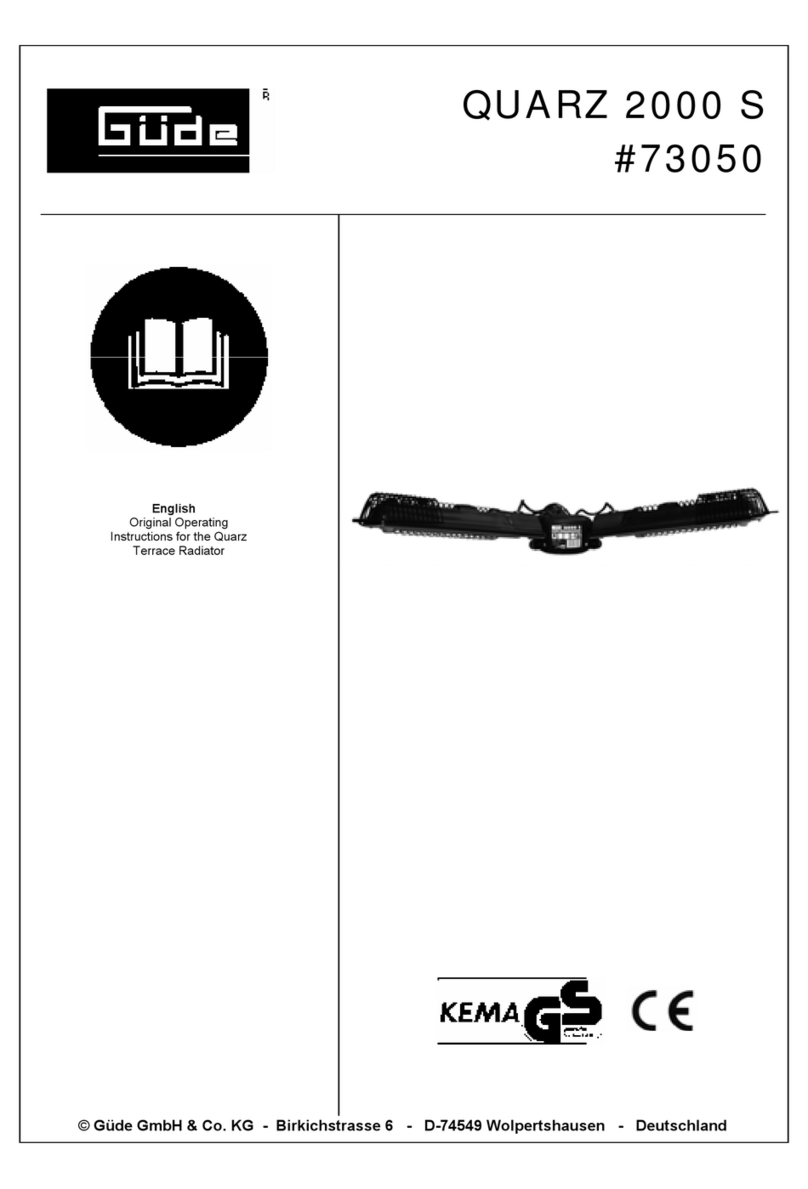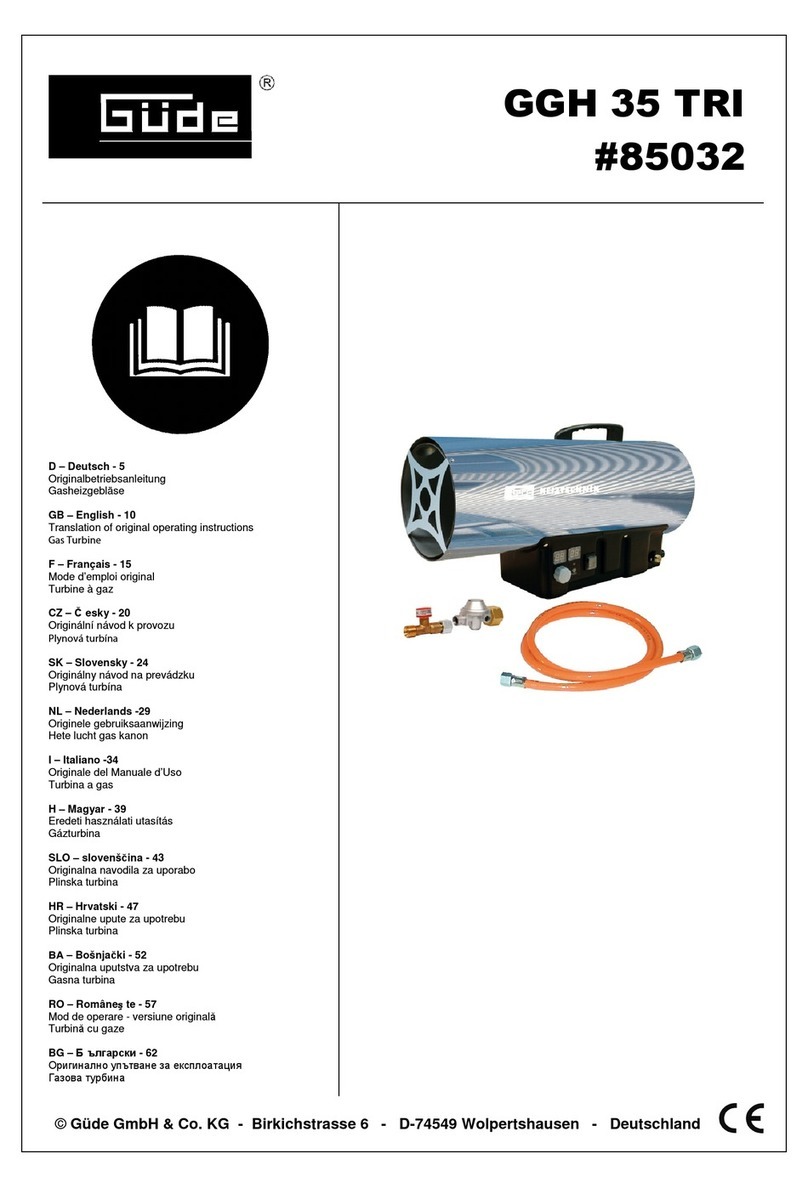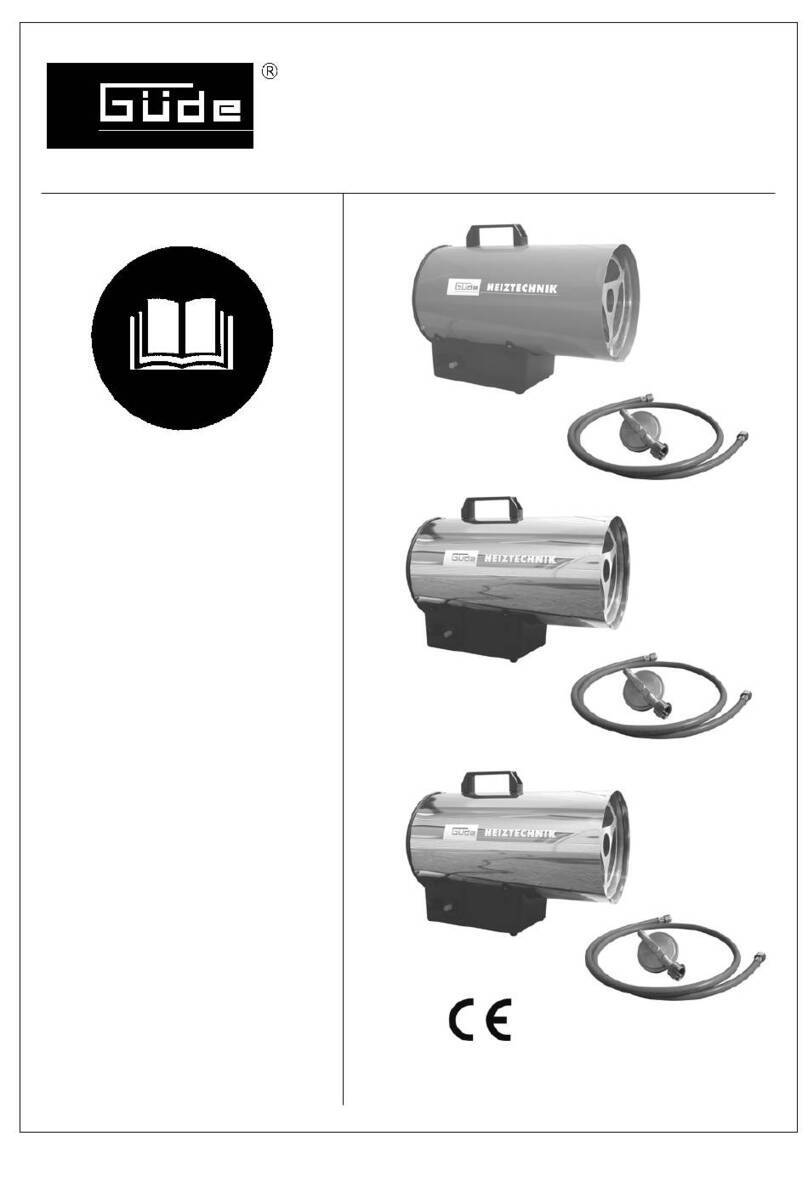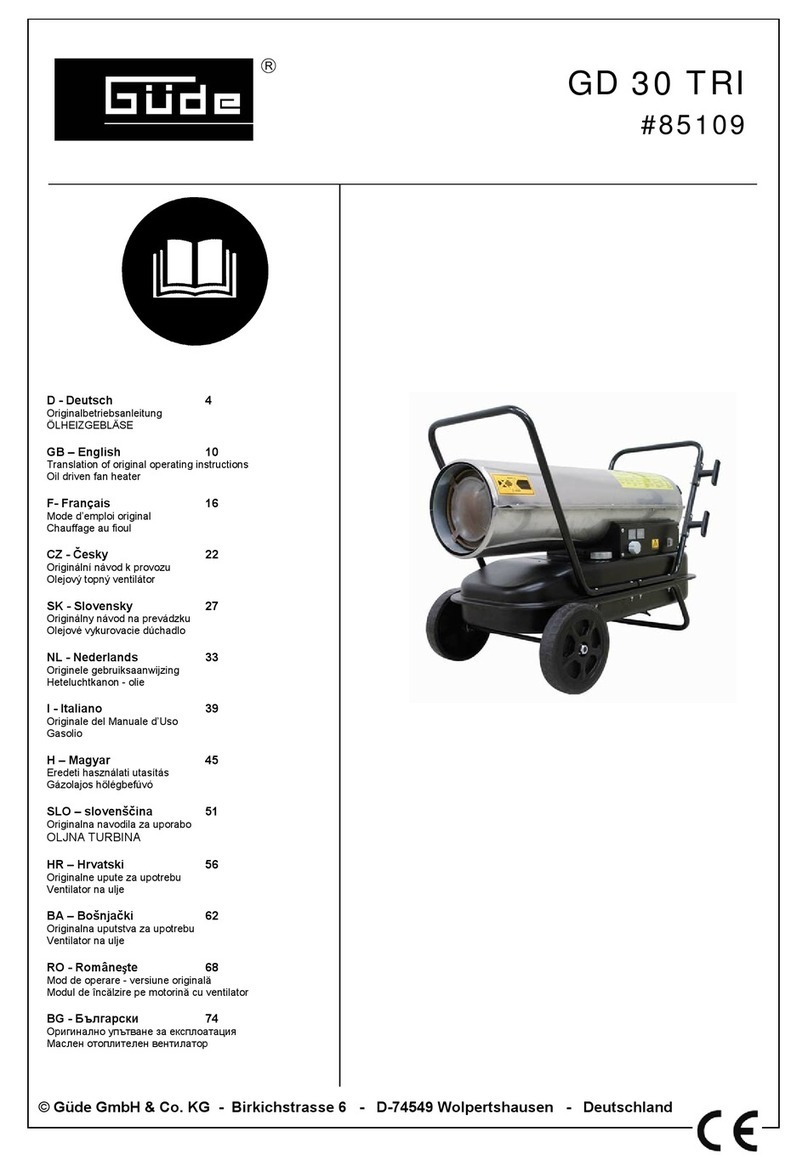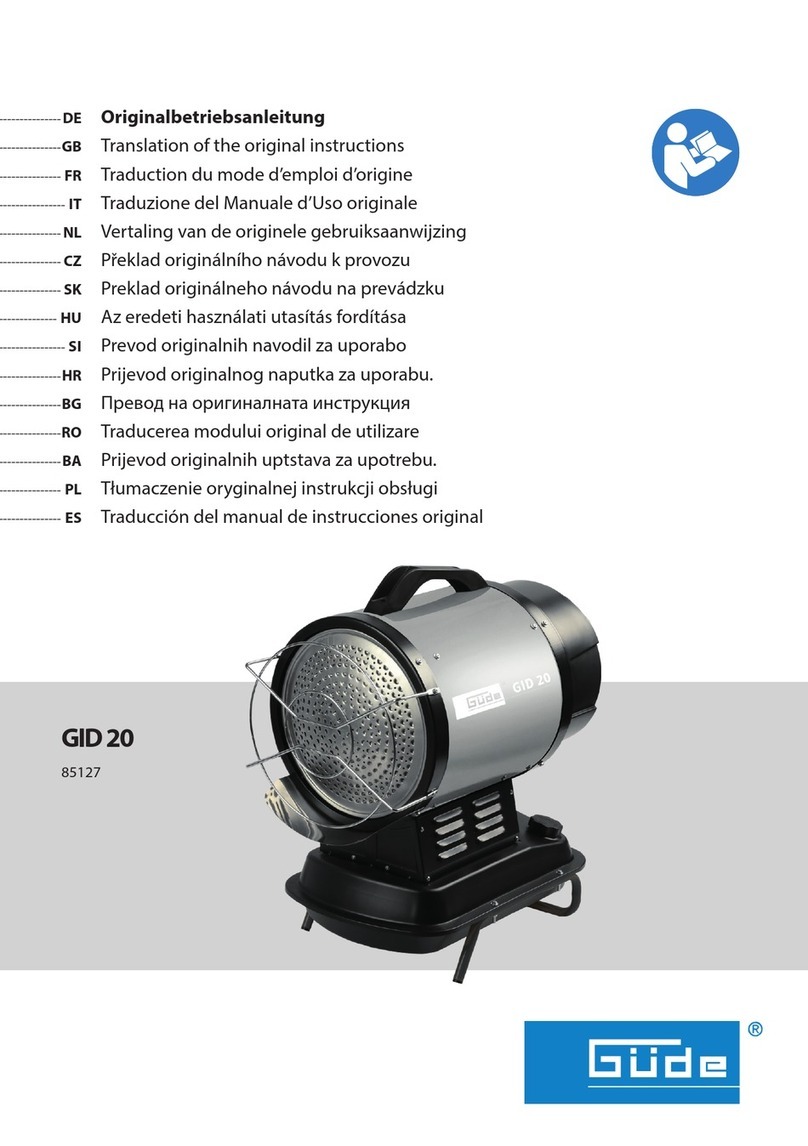
General safety instructions
Please read the instructions in full before first operation. In
case of any doubt about the connection and operation of
the device, please contact the producer (service
department).
TO GUARANTEE A HIGH LEVEL OF SAFETY, FOLLOW
THESE INSTRUCTIONS CAREFULLY:
•After unpacking, check that the device and all of its
parts are in perfect order.
•Pay attention to and take account of the
environment you are working in. Do not use
electric tools in wet or humid environment. Make sure
the lighting is adequate. Do not expose electric tools
to rain or high air humidity. Do not turn electric tools
on in an environment with highly flammable liquids or
gases.
•Prevent the access of unauthorized persons to
the device. Visitors and spectators, especially
children and ill persons, should not linger around the
workplace.
•Pay attention to the electric cable. Never pull at the
cable. To unplug the device, pull the cable by the
plug. The cable must not be placed near sources of
heat, oils and sharp edges.
•Prevent unintentional turning on. Always make
sure that the on/off switch of the device is in the off
position before plugging the device to the power
supply socket.
•Be careful in all situations. Always pay attention
to what you do. Use common sense. Do not use
electric devices and tools when you are tired.
•Be careful and pay attention to damaged parts.
Always inspect the tool before use. Are some parts
damaged? In case of light damage, ask yourself
seriously if the tool is still safe to use and functioning
safely.
•Prevent electric current injuries. Prevent any bodily
contact with an earthed object, e.g. water pipes,
radiators, cooking stoves and refrigerators.
•Warning! Use of accessories and extensions not
recommended explicitly in these instructions may put
persons and objects at risk.
•Make sure the plug is out of a socket before
performing maintenance or adjustment.
•Correct use of the device:
Always follow and keep all instructions from this
manual when operating the device. Prevent use by
children or persons who were not acquainted with its
function.
•Do not use the device when a defect or
malfunction has been detected.
If unusual sounds or strong vibrations occur during
operation which seem to suggest a malfunction, the
device must be immediately switched off and the
cause established by the nearest servicing shop.
•Use only original spare parts.
In case of use of spare parts by other manufacturers,
the warranty becomes void and malfunctions in the
appliance may occur. Original spare parts can be
purchased from our business partners.
•Do not make any alterations to the device.
Do not make any changes or alterations to the
device. All repairs must be performed by an
authorized servicing shop. Unauthorized change can
limit the output of the device but it can also cause
serious accidents if performed by persons without the
necessary technical knowledge.
•It is absolutely necessary to know the regulations and
directives for accident prevention valid in the place of
operation, as well as the other general safety rules.
•This tool complies with all appropriate safety
regulations. Repairs can be performed only by
qualified electricians in authorized service shops,
using only the original spare parts. Non-compliance
may cause a danger of accidents.
Device-specific safety instructions
•The heating device can be used only in well-
ventilated spaces! (min. 40m³)
•The device must not be operated in high-rising living
buildings, cellars, underground spaces, bathrooms
and bedrooms, vehicles like RVs, living trailers, boats
or spaces where another cylinder with liquid gas is
already placed.
•This device can be used only standing on the floor.
•This device can be used only in vertical position.
•The heating device must be installed with regard to
fire prevention.
•The heating device must not be covered with textiles
or other objects.
•Install the heating device in such a way as to leave
enough space in relation to walls, furniture, textiles
and other possible sources of fire.
•Always position the heating device so it points
towards the centre of the room.
•Do not move the device when in operation.
•The heating device cannot be used in apartments or
similar units if the space in the place of installation is
smaller than 40 m³ and it is not ventilated adequately.
An air-intake and exhaust must be provided through
openings, with a diameter of 2500 mm2 per kWh (Hs)
of heat load, but they must be divided evenly together
for the upper and lower hole, with the total diameter
of minimum of 5000 mm2.
•The device must not be operated in high-rising living
buildings, cellars, underground spaces, bathrooms
and bedrooms, vehicles like RVs, living trailers, boats
or spaces where another liquid gas cylinder is already
placed.
•The heating device can be used at an enclosed
workplace only if all the appropriate regulations
regarding health and safety are met. (Organization of
workplace)
•The minimum distance from other heat sources must
be at least 1 meter.
•When installing the device, the minimum side
distance of 200 mm and front distance to other
objects of at least 1500 mm must always be
observed.
•Do not cover the device when in operation. It could
cause overheating and a risk of fire.
•The device must always be connected to an
operational earthing (grounding)(only item no.
85023).
•Do not use the device near a bath tub, shower, wash
basin or swimming pool.
•Do not put the electric cable on a hot surface or
equipment.
•The hot air output grids must not be blocked.
•The electric cable must not be replaced by the user.
The device cannot be installed directly to a firm
socket.
•The air stream from the device must never point to
furniture, curtains or flammable materials.
•In any case, the appliance must not be used as a
heat source in living rooms.
•Never use the appliance unattended as it could
become a source of danger.
•In any case, do not use the appliance to dry textiles.








